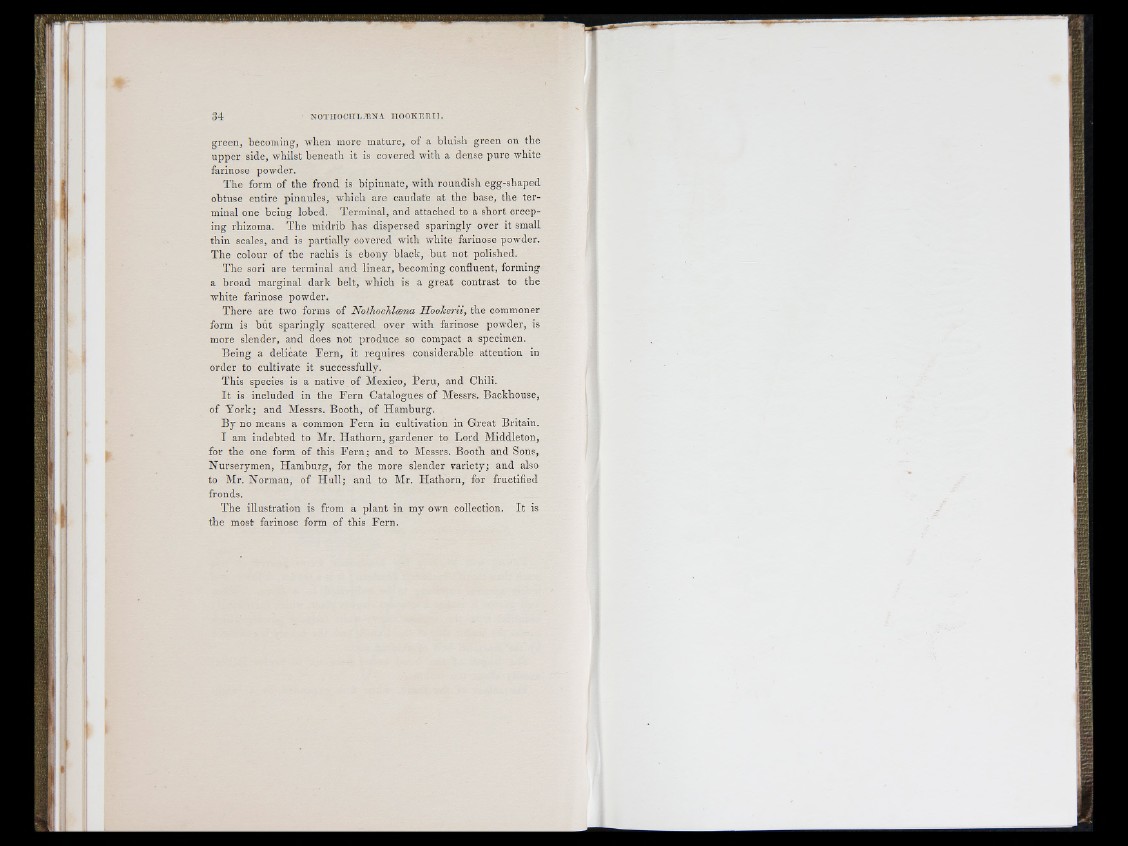
34 N O T IIO C IIL .T iN A IIO O K E T IT I.
green, becoming, when more mature, of a bluislr green on the
up p e r side, whilst beneath it is covered with a dense p ure white
farinose powder.
The form of the froud is hipinnate, with roundish egg-shaped
obtuse entire pinnules, which are caudate at the base, the te r minal
one being lobed. Terminal, and attached to a short creeping
rhizoma. T h e midrib has dispersed sparingly over it small
th in scales, and is partially covered with white farinose powder.
The colour of the rachis is ebony black, b u t not polished.
The sori are terminal and linear, becoming confluent, forming
a broad marginal d ark belt, which is a gre a t contrast to the
white farinose powder.
T h e re are two forms of NotliocMcena Hooherii, the commoner
form is b u t sparingly scattered over with farinose powder, is
more slender, and does not produce so compact a specimen.
Being a delicate F e rn , it requires considerable attention in
order to cultivate it successfully.
This species is a native of Mexico, P e ru , and Chili.
I t is included in the F e rn Catalogues of Messrs. Backhouse,
of Y o rk ; and Messrs. Booth, of Hamburg.
By no means a common F e rn in cultivation in G re a t Britain.
I am indebted to Mr. H a th o rn , g a rdener to L o rd Middleton,
for the one form of this F e rn ; and to Messrs. Booth and Sons,
Nurserymen, H am b u rg , for the more slender varie ty ; and also
to Mr. Norman, of H u ll; and to Mr. H a th o rn , for fructified
fronds.
The illustration is from a plant in my own collection. I t is
the most farinose form of this Fern.